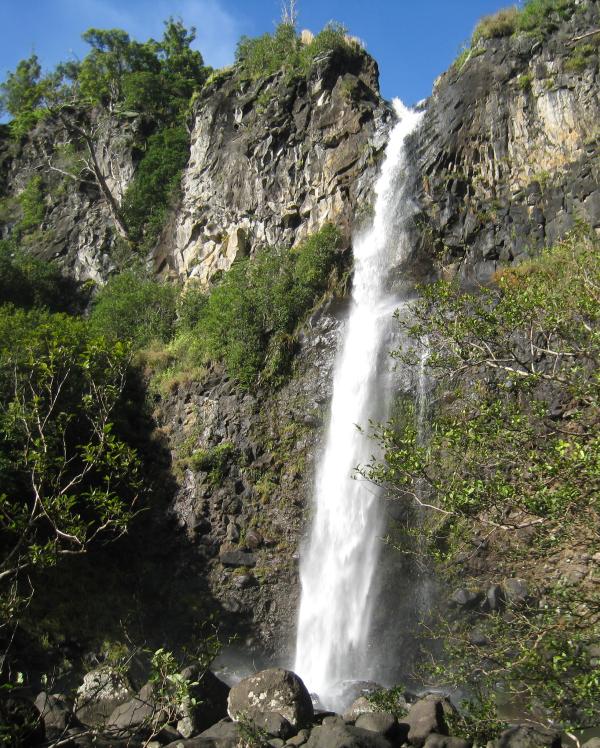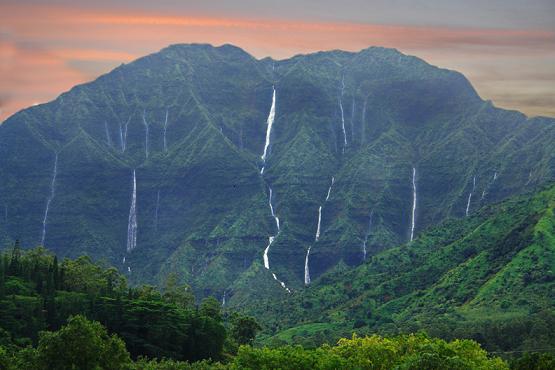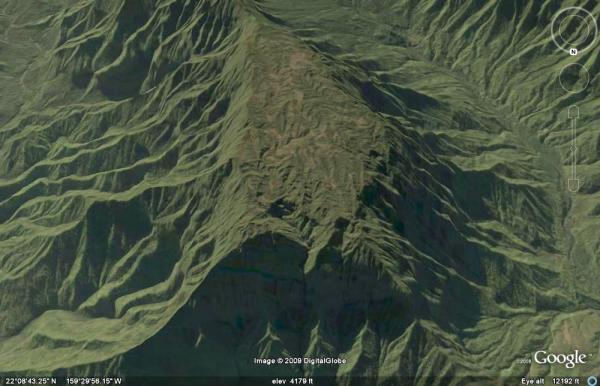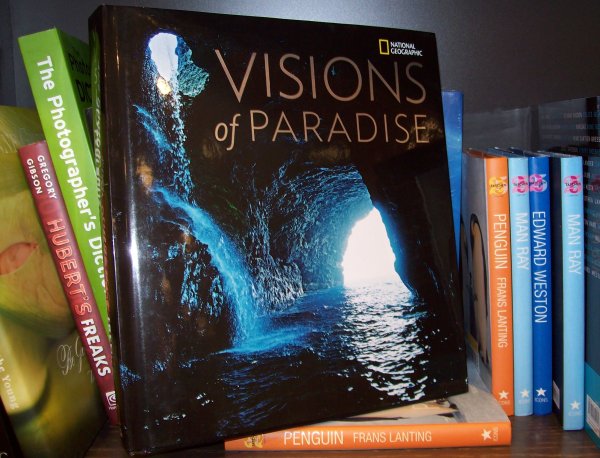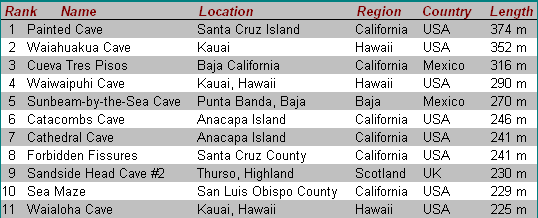The title of this post is blatantly copied from a popular book, but it’s a question many visitors ask themselves, and a few ask me. Indeed, I had to ask it of myself before I made the move, back in 2003.
So I thought I’d answer an email on the subject:
We are thinking about moving our young family to Kauai.
We absolutely love the island! We will be renting a house, as it is so expensive to buy, what is the best area to live? We are thinking Kilauea or Kapaa?? Any advice you can give us would be much appreciated. How are prices for food, gas, utilities???
First, I have written two other posts mostly on this topic. The first was way back when I started this blog, from someone who wasn’t quite as decided as the person above. Hey, Bill, if you’re still reading, leave a comment about your thoughts and eventual preparations for moving to Kauai. Then there one of my more recent posts, about having to move away. So here is my answer from the whole experience.
There is no “best” area to live, it all depends on your preferences and expectations. We chose Kapaa because it is centrally located. I think if you live in the north or south, you won’t drive the 2 hours to the other side more than a few times a year. But some people might want to live in a “smaller” place and not feel pressured to go everywhere.
In addition, Kapa’a is generally middle class (for Hawaii at least), and has the largest (and therefore somewhat more affordable) choice of housing. For these very same reasons, it is also where the most transplants end up, and so you’ll find more people like yourselves, which makes it easier to meet them. The Kapa’a area also has the most grocery stores (although the huge Safeway planned in Lihue will change that—as well as the small island feel).
One thing I recommend is to avoid the inland parts of Kapa’a if you can. This is where the most choice and least expensive housing is located, but it’s also the dampest and always a 15 minute drive to town. We rented up there for a year, but then we bought our house in the neighborhood called the Wailua Houselots, between the Sleeping Giant and Wailua Beach.
Lihu’e is nice, still centrally located, and closer to a lot of things (government offices that you’ll visit a lot at first, bigger library, the biggest gym, the only real movie theatre left, big stores such as Walmart, Kmart, Barnes and Noble, Costco, and the only mall—which is convenient even if shopping is not your thing). The southern side of Lihue is called Puhi, that’s where most of the shopping is, but it’s also the area that is being developed to look like
California.
Kilauea is closer to Hanalei and the North Shore, but it isn’t a coastal town like downtown Kapa’a. There are 2 beaches nearby, but they can only be accessed
by trail or dirt road. It is a great neighborhood, friendly and unpretentious middle-class. We had friends that lived there even though they had a long commute to Lihue. But there are only a few convenience stores there and natural foods store, which are more expensive.
You didn’t ask, but here’s my impression of the other main residential areas:
- Princeville: relatively expensive and a bit sterile, like a retirement community. Plus there is lots of construction so it seems a bit noisy. They do have a great library, a full grocery (but the most expensive on the island), and Hanalei is nearby.
- Hanalei and Haena beyond: 100% Kauai-style living, if you can afford it and overlook the vacation rentals. There are few affordable long-term rentals, but they can be had. It’s not completely overrun with tourists and shops yet, but close. Lifestyle is so laid-back, you’ll find it difficult to go visit the rest of the island. I think it would be too insular for my taste.
- Koloa/Poipu: Koloa would be a nice town but it just doesn’t seem to achieve critical mass of conveniences: small library, small groceries, small neighborhoods, lots of through-traffic. Poipu is overrun with tourists, there are only a few residential streets. Still, if you want the most sunshine and the vacation-everyday experience, this is the place. If you have to go to work and live frugally, forget it.
- Hanapepe/Waimea/Kekaha: now you’re in local territory, which means lots of friendly locals and a few resentful locals. Hanapepe is a quaint little town, very artsy, the most tourist friendly. Waimea and Kekaha are the cheapest places to live on the island, so a lot of locals have to move there. Hanapepe has the nicest beach, Waimea the least swimmable, and all 3 get very hot in the summer.
The deciding factor for you might be schools. Kilauea and Hanalei have good gradeschools, from what I’ve heard, Kapa’a and Lihu’e are decent. Near Kilauea is the private K-12 Kula School, I’ve heard decent things about it, but there’s only a few kids in each class. There are only 3 high schools, Kapa’a, Lihu’e (called Kaua’i HS) and Waimea. Unless your kids really have street smarts and something I would call a rural attitude, I’m not sure they will fit in very well. Plus academics aren’t that great, I hear they don’t have real AP classes. Kapa’a and Lihu’e have middle schools which are somewhere between the innocence of grade schools and the issues with the high schools. The west side of Lihu’e, Puhi, has the private and pricey Island School, widely recognized as the best pre-K-12 on the island–that’s where a lot of the transplant kids go, mostly haoles (ie white).
Regarding prices…
Unless you’re coming from California or the East Coast, housing costs are indeed expensive. Actually, it is somewhat less than big-city California in my experience, but without all the employment opportunities. Rents have come down a bit, but they’re hitting a floor where the landlords can’t go much lower due
to their own high mortgages. In any case, you’ll need a trust fund or some stable form of income if you expect to stay permanently. I lost my job and had
too leave—not fun.
To me, the price of food it the biggest myth. Yes, food is expensive if you eat lots of convenience and processed foods that have to be shipped from the
mainland to the local supermarket. Milk, even though it comes from small producers on the Big Island, is twice the price as California. We solved that problem by drinking soy milk, which was just as expensive until Costco arrived (about $1 per quart there).
We always go to the farmer’s market every week and buy local produce. Then just substitute all the local things into your recipes: sweet potatoes for regular potatoes, chard for spinach, etc. Eat local fruit, even from your yard and your neighbor’s (do not underestimate the value and goodness of an avocado tree at your rental property), avoid apples and store-bought fruit. We never had a big garden, but a few bananas and salad greens are healthy and don’t require too much work.
We would even buy a fair amount at Papaya’s, the biggest natural food store in Kapaa. It is overpriced (think Whole Foods but without all the glitz), but if you buy the bulk items (we baked our own bread in a bread machine) and stock up on sale items, you get can get by without spending a premium. Same goes for those things from the regular grocery that you inevitably need (beer, toilet paper, etc.): watch the sales every week and stock up. The way we cook and eat, I found it no more expensive than the mainland, sometimes cheaper.
Gas prices vary a lot, definitely more than on the mainland, but more uniform, so you don’t drive around worrying about finding the cheapest gas. They’re cheaper than downtown San Francisco, but more expensive than the California average, and significantly more than the national average. Costco has cheap gas. Contrary to California, Shell is consistently the cheapest on-island, especially the station in Wailua. If you have a Shell Mastercard that gives you 5% back on their gas, it’s as cheap as Costco and more convenient. Actually, there local newspaper hosts a web page with current prices. For comparison, it’s about $2.00 /gal in San Francisco, $1.75 outside of town, and I saw $1.55 in Texas over the holidays.
Utilities are the biggest shock, definitely 2 to 3 times more than CA, but even then, there are ways to save. Kauai has the highest electric rates in the whole country, so look for houses with gas appliances and hot water. Gas is expensive too, but more efficient and comes out cheaper. Best of all is solar hot water, as well as a covered clothesline; look for those in a house to save you at least $100/month. Then install compact fluorescent light bulbs if the rental doesn’t have them already.
That’s just an overview of the items I can think of. Feel free to ask more details in the comments. Readers, feel free to add your own examples of how Kaua’i is so expensive, or ways you’ve found to cope.
PS: I have gotten some other interesting emails and blog comments recently, I’ll answer them soon.





